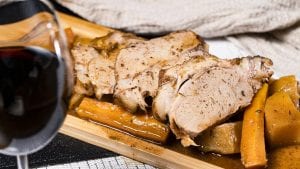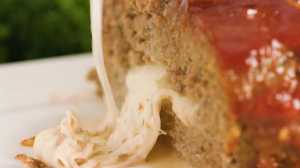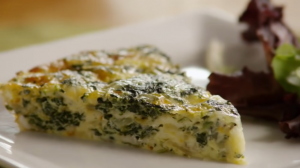Embark on a culinary journey to Portugal with this festive and flavor-packed red pepper pork recipe. It's a traditional dish that brings out the richness of pork tenderloin with the added kick of red bell peppers, all marinated in a garlicky, peppercorn-infused paste that's bound to tantalize your taste buds.
While most of the ingredients in this recipe are commonly found in any supermarket, you might want to pay special attention to the pork tenderloin. Ensure you select a high-quality, fresh piece for the best results. Another ingredient to look out for is whole black peppercorns, which gives this dish its distinctive peppery flavor. Opt for whole peppercorns instead of ground pepper for a more robust flavor.
Essential Ingredients for Portuguese Red Pepper Pork
Garlic cloves: A key flavoring ingredient, it's mashed into a paste with peppercorns for a pungent marinade.
Coarse salt: Enhances the flavor of the other ingredients.
Olive oil: Used for sautéing and in the marinade.
Whole black peppercorns: Adds a spicy kick to the dish.
Pork tenderloin: The star ingredient of this recipe, it's marinated and pan-fried for a tender finish.
Red bell peppers: Adds a sweet, slightly tangy flavor and a colorful appeal.
White wine: Deglazes the pan and adds a rich depth of flavor.
Lemons: Provides a refreshing tangy contrast to the rich flavors.
One reader, Ari Kunz says:





This Portuguese red pepper pork recipe is a game-changer! The flavors are out of this world. The pork is tender and juicy, and the red peppers add a delightful sweetness. The white wine and lemon give it a zesty kick. It's a must-try for anyone who loves bold, savory dishes.
Essential Techniques for Portuguese Red Pepper Pork Recipe
Marinating the pork: The pork tenderloin should be marinated in the garlic mixture for 2 to 4 hours in the refrigerator to allow the flavors to infuse.
Browning the pork: Quickly brown the pork for about 1 minute on each side over high heat to seal in the flavors and create a caramelized crust.
Sauteing the red peppers: The red peppers should be sautéed for 2 to 5 minutes until tender but firm to bring out their natural sweetness and flavor.
Cooking the pork to the right temperature: The pork should be cooked to an internal temperature of 180 degrees F to ensure it is safe to eat and tender. Use a meat thermometer to check the temperature.
Garnishing with lemon: Squeeze the juice of the remaining ½ lemon over the pork and peppers and garnish with thin lemon rounds to add a bright, citrusy flavor to the dish.
How To Make Portuguese Red Pepper Pork
Enjoy a tasty combo of sweet and garlicky flavors with this pork recipe, loaded with well-seasoned tender pork, red bell peppers, and garlic!
Serves:
Ingredients
- 4large garlic cloves,peeled
- 1½tspcoarse salt
- 2tbspolive oil,divided
- 1tbspwhole black peppercorns
- 2lbspork tenderloin,cut into 1-inch medallions
- 2red bell peppers,julienned
- 1cupwhite wine
- 2lemons
Instructions
-
With a large mortar and pestle, mash the garlic, coarse salt, 1 tablespoon of olive oil, and peppercorns into a fine paste. Transfer to a large bowl.
-
With a mallet, flatten the pork medallions to ¼-inch thick pieces. Place in the bowl with the garlic mixture, tossing to coat.
-
Cover, and marinate for 2 to 4 hours in the refrigerator.
-
Heat the remaining oil in a large skillet over high heat. Stir in the pork and remaining garlic mixture.
-
Quickly brown the pork for about 1 minute on each side. Remove from heat, and set aside.
-
Place the red peppers into the skillet, and saute for 2 to 5 minutes until tender but firm. Pour the white wine into the skillet, and scrape up the browned bits.
-
Reduce the heat to low, then return pork to the skillet, and continue cooking for 10 to 15 minutes, to an internal temperature of 180 degrees F.
-
Transfer the pork and pepper mixture to a serving platter.
-
Slice 1½ lemons into thin rounds. Squeeze the juice of the remaining ½ lemon over the pork and peppers, and garnish with the lemon rounds.
-
Serve and enjoy!
Nutrition
- Calories: 209.34kcal
- Fat: 7.55g
- Saturated Fat: 1.83g
- Trans Fat: 0.04g
- Monounsaturated Fat: 4.01g
- Polyunsaturated Fat: 1.04g
- Carbohydrates: 5.29g
- Fiber: 1.30g
- Sugar: 1.92g
- Protein: 24.14g
- Cholesterol: 73.71mg
- Sodium: 415.34mg
- Calcium: 23.90mg
- Potassium: 570.91mg
- Iron: 1.54mg
- Vitamin A: 47.09µg
- Vitamin C: 46.46mg
Key Technique for Perfecting Portuguese Red Pepper Pork
When marinating the pork, ensure that all pieces are evenly coated with the garlic and pepper paste. This will not only ensure that the flavor is well-distributed, but it also helps to tenderize the meat. For an even deeper flavor, consider marinating the pork overnight. Just remember to keep it refrigerated.
Time-Saving Tips for Making Portuguese Red Pepper Pork
Prep ahead: Marinate the pork and prepare the garlic paste the night before to save time on the day of cooking.
Use pre-cut veggies: Consider using pre-cut red peppers to save time on chopping and preparation.
Multi-task: While the pork is marinating, use that time to prepare other components of the meal to maximize efficiency.
Invest in a meat tenderizer: Using a meat tenderizer can help flatten the pork quickly and evenly, saving time and effort.
Organize ingredients: Before starting the recipe, organize all the ingredients and tools needed to streamline the cooking process.
Quick clean-up: Clean as you go to minimize the post-cooking clean-up time and maintain an organized cooking space.
Lemon juice shortcut: Use store-bought lemon juice as a time-saving alternative to juicing fresh lemons.
Substitute Ingredients For Portuguese Red Pepper Pork Recipe
garlic cloves - Substitute with shallots: Shallots have a mild, sweet flavor that can provide a similar aromatic base to the dish.
coarse salt - Substitute with kosher salt: Kosher salt has a similar texture and flavor profile, and it can be used in the same quantity as coarse salt.
olive oil - Substitute with grapeseed oil: Grapeseed oil has a neutral flavor and high smoke point, making it a suitable substitute for olive oil in this recipe.
black peppercorns - Substitute with cracked black pepper: Cracked black pepper can provide a similar peppery flavor and texture to the dish.
pork tenderloin - Substitute with chicken thighs: Chicken thighs can be a flavorful alternative to pork tenderloin and will work well with the other ingredients in the recipe.
red bell peppers - Substitute with yellow bell peppers: Yellow bell peppers have a similar sweetness and texture to red bell peppers and can be used as a substitute in this recipe.
white wine - Substitute with chicken or vegetable broth: Broth can add depth of flavor to the dish, similar to white wine, and can be used in equal amounts.
lemons - Substitute with limes: Limes can provide a similar level of acidity and citrus flavor to the dish, complementing the other ingredients in the recipe.
Best Way to Present This Delicious Portuguese Dish
Elevate the pork medallions: Carefully arrange the marinated pork medallions on the plate, ensuring they are evenly spaced and visually appealing.
Create a vibrant pepper medley: Arrange the sautéed red bell peppers around the pork, creating a colorful and visually stunning display.
Garnish with lemon accents: Place the thin lemon rounds strategically around the dish to add a pop of brightness and a hint of citrus aroma.
Drizzle with pan sauce: Artfully drizzle the flavorful white wine pan sauce over the pork and peppers, ensuring each portion is generously coated.
Add a touch of greenery: Garnish the dish with a sprig of fresh parsley or thyme to add a touch of freshness and a burst of color.
Plate with precision: Pay attention to the placement of each element on the plate, ensuring a balanced and visually appealing presentation.
Focus on minimalism: Embrace the beauty of simplicity by avoiding overcrowding the plate, allowing the vibrant colors and textures to shine through.
Consider the plate as a canvas: Treat the plate as a blank canvas, using the arrangement of the ingredients to create an artistic and visually striking presentation.
Essential Kitchen Tools for Making Portuguese Red Pepper Pork
- Mortar and pestle: A mortar and pestle is used to grind and crush ingredients into a fine paste, such as garlic, salt, and peppercorns.
- Mallet: A mallet is used to flatten the pork medallions to an even thickness for even cooking.
- Skillet: A skillet is used to brown the pork and sauté the red peppers, providing a large surface area for even cooking.
- Serving platter: A serving platter is used to present the finished dish in an appealing manner for serving.
Storing and Freezing Portuguese Red Pepper Pork
Let the pork cool completely before storing or freezing. This will prevent condensation from forming and potentially spoiling the meat.
To store in the refrigerator, place the cooled pork and peppers in an airtight container. It will keep for up to 3-4 days in the fridge.
If you have leftovers, you can freeze the pork and peppers for longer storage:
- Transfer the cooled mixture to a freezer-safe container or resealable bag, removing as much air as possible to prevent freezer burn.
- Label the container with the date and contents for easy identification.
- Freeze for up to 2-3 months for best quality.
To reheat frozen pork and peppers:
- Thaw the frozen mixture in the refrigerator overnight.
- Place the thawed mixture in a skillet or saucepan over medium heat.
- Stir occasionally until heated through, adding a splash of white wine or water if needed to prevent drying out.
- Alternatively, you can reheat the mixture in the microwave, stirring every 30 seconds until heated through.
If you want to freeze the pork and peppers separately for more versatility:
- Place the cooled pork and peppers in separate freezer-safe containers or resealable bags.
- Remove as much air as possible, label, and freeze for up to 2-3 months.
- Thaw and reheat each component separately as needed, combining them when ready to serve.
How To Reheat Leftover Portuguese Red Pepper Pork
Preheat your oven to 350°F (175°C). Place the leftover pork tenderloin and red bell peppers in an oven-safe dish, and cover it with aluminum foil. Bake for 15-20 minutes, or until the pork reaches an internal temperature of 145°F (63°C). This method helps to retain the moisture and flavor of the dish while ensuring that the pork is heated through evenly.
For a quicker option, you can use the microwave. Place the leftover portuguese red pepper pork in a microwave-safe dish, and cover it with a damp paper towel. Microwave on high for 1-2 minutes, or until the pork is heated through. Be sure to stir the dish halfway through the reheating process to ensure even heating. Keep in mind that microwaving may cause the pork to dry out slightly, so it's best to use this method when you're in a hurry.
If you have a bit more time, consider reheating the leftover pork and peppers in a skillet on the stovetop. Heat a tablespoon of olive oil in a large skillet over medium heat. Add the leftover pork and peppers, and cook for 5-7 minutes, stirring occasionally, until the pork is heated through and the peppers are tender. You can add a splash of white wine or lemon juice to the skillet to help revive the flavors of the dish.
For a delicious twist on leftovers, try slicing the reheated pork tenderloin and serving it in a sandwich or wrap. Slice the pork thinly, and place it on a crusty roll or in a tortilla wrap along with the sautéed red bell peppers, some fresh greens, and a drizzle of your favorite sauce or dressing. This is a great way to enjoy the flavors of the original dish in a new and exciting way.
Interesting Facts About Portuguese Red Pepper Pork
The Portuguese red pepper pork recipe is a traditional dish that combines the flavors of garlic, olive oil, and white wine to create a delicious and savory meal. This dish is a popular choice in Portuguese cuisine and is often served with a side of vegetables or rice. The combination of the tangy red peppers and the tender pork creates a unique and flavorful experience for the taste buds. This dish is a great option for a special dinner or gathering with friends and family. Try this recipe for a taste of Portugal in your own home!
Is Making Portuguese Red Pepper Pork at Home Cost-Effective?
This Portuguese red pepper pork recipe is quite cost-effective for a household. The main ingredients, such as pork tenderloin, red bell peppers, and lemons, are generally affordable and readily available. The use of white wine adds a touch of elegance without breaking the bank. With an approximate cost of $25-$30 for a household of 4, this flavorful dish offers great value. The rich flavors and simple preparation make it a solid choice for a delicious and budget-friendly meal. Overall Verdict: 9/10
Is Portuguese Red Pepper Pork Healthy or Unhealthy?
This Portuguese red pepper pork recipe has both healthy and unhealthy aspects. On the positive side:
- Pork tenderloin is a lean protein source, providing essential amino acids without excessive saturated fat
- Red bell peppers are nutrient-dense, offering vitamin C, vitamin A, and antioxidants
- Garlic and lemon juice add flavor while contributing beneficial compounds like allicin and vitamin C
However, there are some less healthy components:
- The recipe calls for a significant amount of added salt, which can contribute to high blood pressure and other health issues if consumed in excess
- Cooking with olive oil at high heat can cause the formation of harmful compounds and the degradation of beneficial fatty acids
- The recipe includes white wine, and while moderate alcohol consumption may have some health benefits, it's not necessary for a nutritious meal
To make this recipe healthier, a few adjustments could be made:
- Reduce the amount of added salt, relying more on the flavors of the garlic, peppercorns, and lemon to season the dish
- Use a cooking oil with a higher smoke point, such as avocado oil, for high-heat cooking to minimize the formation of harmful compounds
- Opt for a low-sodium or sodium-free broth instead of white wine to deglaze the pan and add flavor without the alcohol content
- Serve the pork and peppers with a side of nutrient-rich vegetables, such as roasted broccoli or a leafy green salad, to increase the overall nutritional value of the meal
- Consider using a portion of the lemon juice to create a light, citrusy sauce to drizzle over the finished dish, adding brightness and vitamin C without relying on excessive salt or oil
Editor's Thoughts on This Flavorful Portuguese Pork Dish
This Portuguese red pepper pork recipe is a delightful combination of flavors and textures. The marinade infuses the pork with a robust garlic and peppercorn essence, while the sautéed red peppers add a sweet and tangy element. The addition of white wine brings depth to the dish, and the touch of lemon brightens the flavors. The result is a succulent and aromatic pork dish that is sure to impress. The recipe's simplicity makes it accessible for home cooks, while the sophisticated flavors make it suitable for special occasions. Overall, it's a wonderful recipe that showcases the rich culinary heritage of Portugal.
Enhance Your Portuguese Red Pepper Pork Recipe with These Unique Side Dishes:
Similar Recipes to Portuguese Red Pepper Pork
Appetizer and Dessert Pairings for Portuguese Red Pepper Pork
Why trust this Portuguese Red Pepper Pork Recipe:
This recipe offers a delightful blend of flavors and textures, creating a mouthwatering dish that will surely impress. The use of garlic and black peppercorns in a fragrant marinade infuses the pork with robust, savory notes. The addition of red bell peppers and white wine brings a delightful sweetness and depth to the dish. The final touch of lemon juice adds a refreshing citrusy zing, elevating the overall taste. With a harmonious combination of ingredients, this recipe promises to deliver a memorable dining experience.
Was this page helpful?
Have your own special recipe to share? Submit Your Recipe Today!












